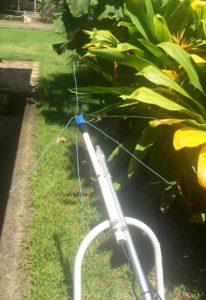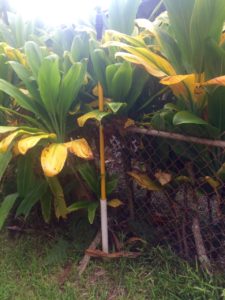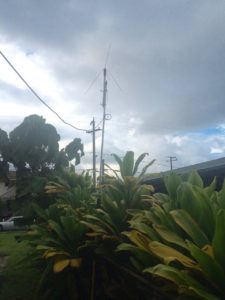 AllStar Link is a network of publicly-accessible Amateur Radio Repeaters and remote base stations connected through a Voice over IP (VOIP) internet connection. AllStar Link has much in common with Echolink and IRLP in that it is a collection of linkable remote nodes. A significant difference is that AllStar uses commonly available, inexpensive hardware and open source software to create the network. As a result, it is much easier to set up, maintain, and use. The voice quality is better and easier to maintain. Of course, much of that is my somewhat biased opinion.
AllStar Link is a network of publicly-accessible Amateur Radio Repeaters and remote base stations connected through a Voice over IP (VOIP) internet connection. AllStar Link has much in common with Echolink and IRLP in that it is a collection of linkable remote nodes. A significant difference is that AllStar uses commonly available, inexpensive hardware and open source software to create the network. As a result, it is much easier to set up, maintain, and use. The voice quality is better and easier to maintain. Of course, much of that is my somewhat biased opinion.
My setup includes:
- A Motorola 2-meter transceiver set up on 147.450 Mhz with a 100.0 Hz tone. The transceiver sends anything it receives to the Raspberry Pi and transmits out anything that the Raspberry Pi sends to it. It isn’t a repeater, but rather a simplex AllStar Link node. The transceiver is transmitting through a 2 Meter ground plane antenna I built for this purpose. There are many AllStar Link nodes that are connected to a repeater, in which case all everything coming in over RF to the repeater is rebroadcast as well as sent to the AllStar network.
- A Raspberry Pi Model 2B computer. This has a USB interface to the Motorola transceiver and a wired ethernet connection to my Oceanic Time Warner cable router. The Pi is running Raspbian Linux and a special version of Asterisk, software for a Private Branch Exchange, or PBX. The setup instructions and software are located at hamvoip.org.
I have two AllStar Link nodes, numbers 42284 and 42287. The first, 42284, is an “RF” node, meaning that this node is connected to the transceiver. Anything coming into the Asterisk software from the Internet using the Asterisk protocol, is forwarded to the radio for transmission. Anything coming from the radio through the USB port that has the proper format is forwarded out to any nodes that are connected to my system (either I made the connection or the other node made the connection).
Most of the time, my RF node is connected to the Hawaiian-Mainland AllStarLink node, node number 42616. Quite a number of other nodes are also connected to 42616, so my node hears and retransmits all communications from any of the nodes connected to 42616. If desired, I can use my HT to connect to any other active node, either permanently or temporarily.
Every Sunday afternoon there is a Hawaiian-Mainland AllStar Net which takes checkins from all across the world followed by a fairly free-form discussion. At the current time, I’m on duty at the Visitors’ Center during this net and generally cannot participate.
The second AllStar Link node, 42287, is what is called a “conference bridge”. This is a way for connections to be made without the voice information being transmitted out on RF to the local area. It’s also a way for a portable node to connect and then from the conference bridge be connected elsewhere thus not making everyone else subject to all the issues of being portable. I don’t use this node very often.
It is possible to be on the network without an HT. Software called iaxrpt which is a special purpose IAX2/GUI client that has the ability to connect to an Asterisk PBX server. This software runs on a Windows PC and uses the PC’s microphone and speakers, acting very much like an HT. The iaxrpt client connects to a node and from there anything sent to the iaxrpt client comes out the speakers and anything the iaxrpt collects from the microphone is sent to the connected node for distribution.
The system is very clever. The documentation is excellent. The support forums and mailing lists are very responsive with a highly engaged community. Continuing development is happening with the next release of the Asterisk software on the near horizon.


